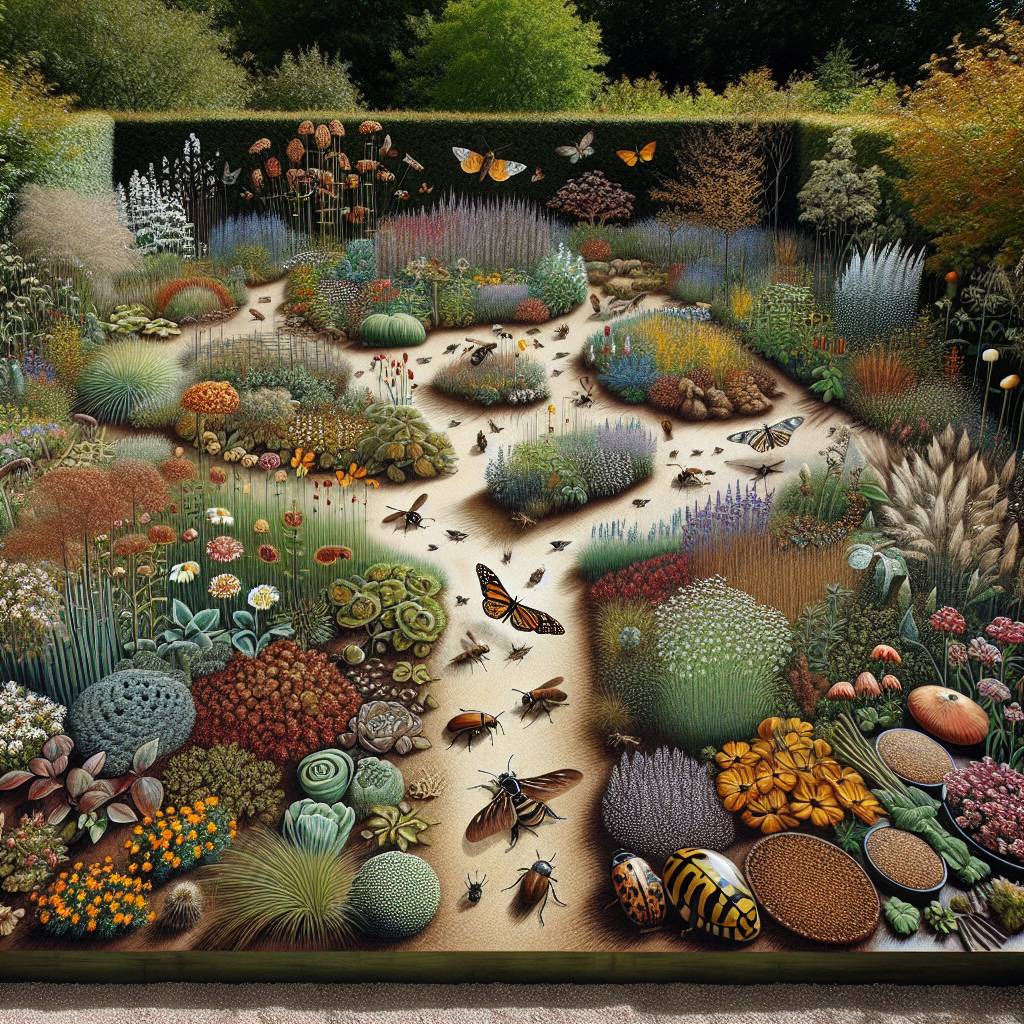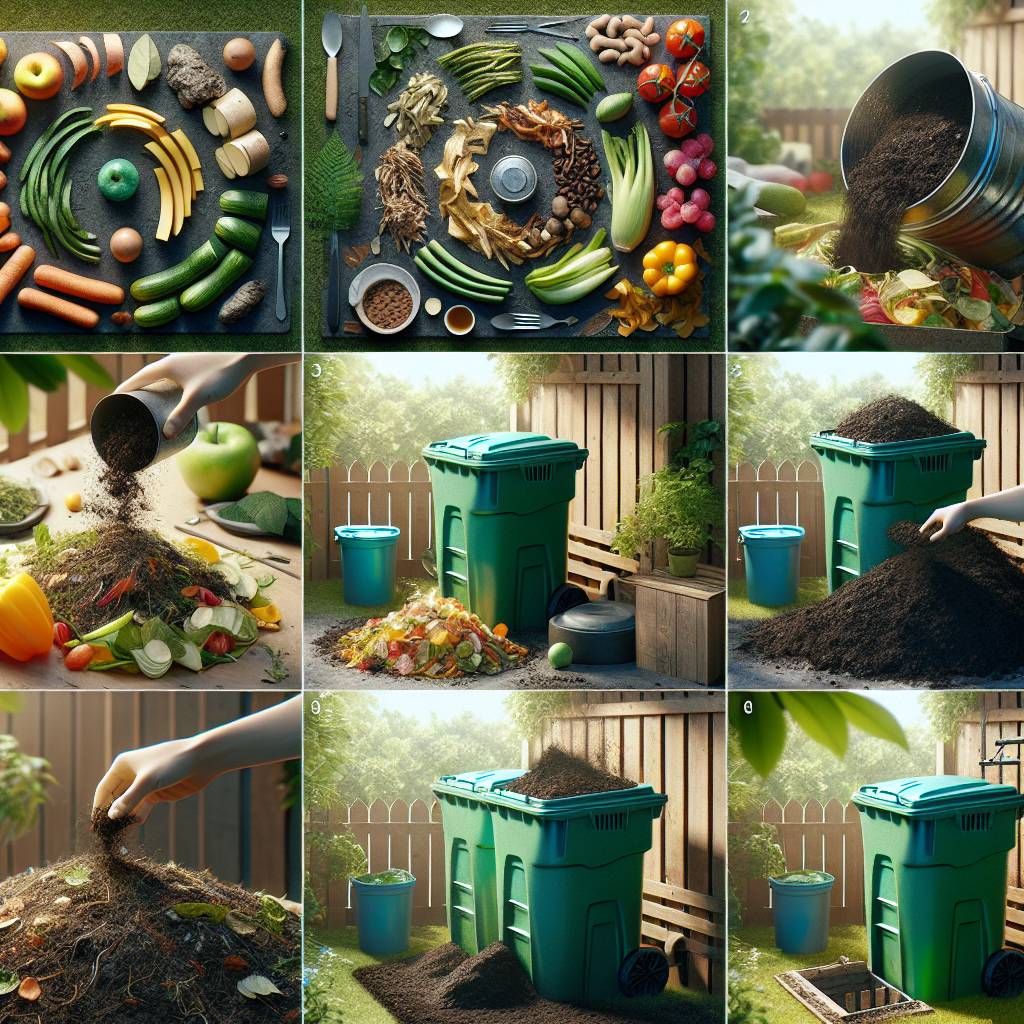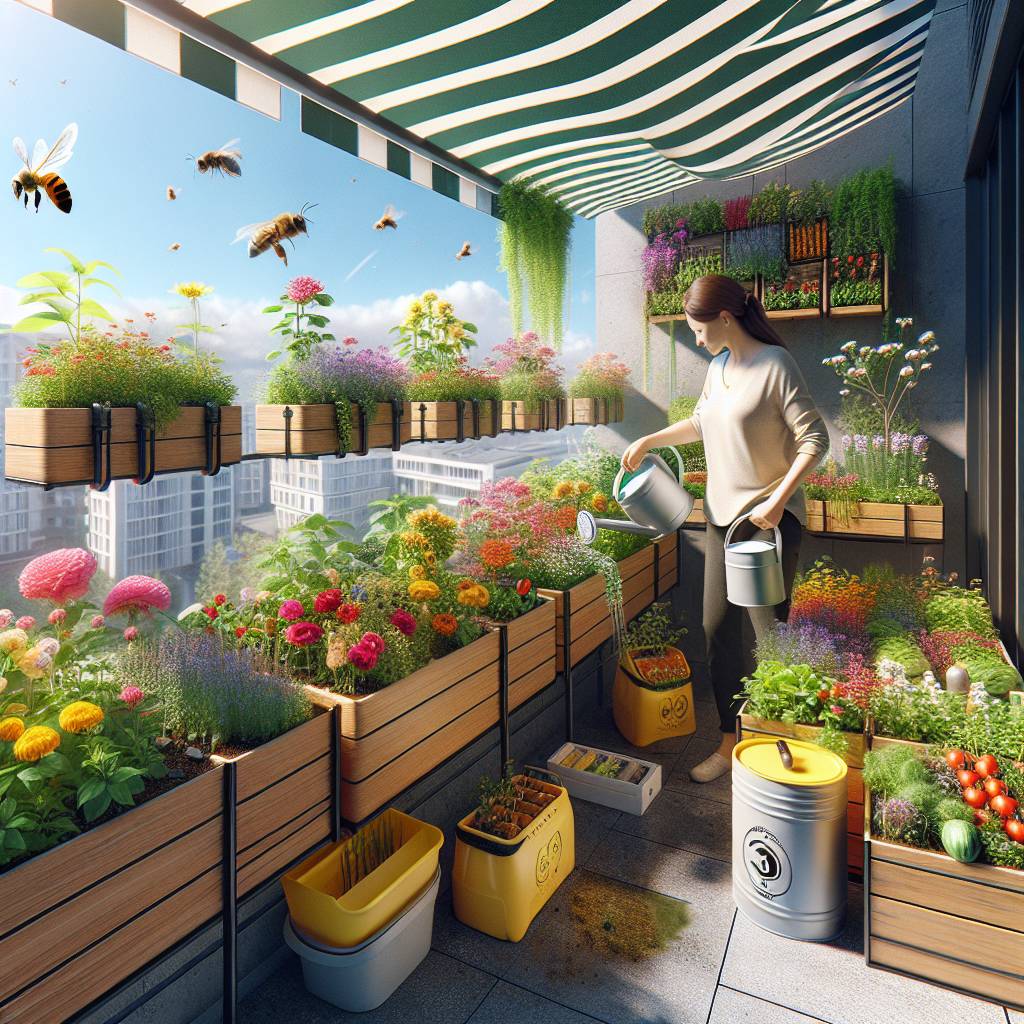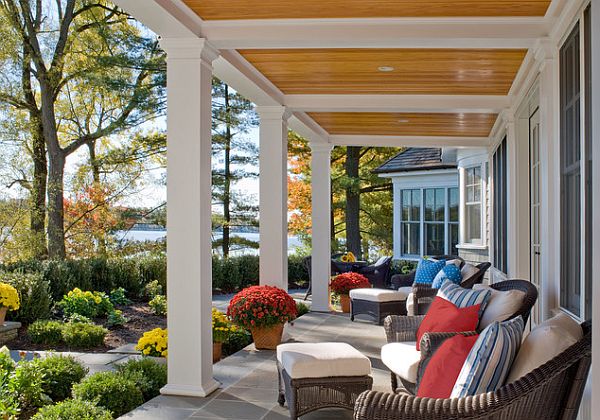Want to naturally boost your garden’s health and yield? Creating habitats for beneficial insects is the key. By fostering environments that attract native insects, ladybugs, lacewings, and parasitic wasps, you can effectively manage pests while promoting pollination and controlling insect eggs. These tiny allies act as nature’s pest control squad, preying on harmful bugs that threaten your plants.
Encouraging these helpful critters, such as native insects and birds, doesn’t require a green thumb or acres of land; even small urban gardens can provide a haven for them. Whether it’s planting specific flowers, setting up insect hotels, or leaving some wild spaces untouched, there are numerous simple ways to create welcoming habitats for these beneficial insects.
Key Takeaways
- Diverse Plant Selection: Choose a variety of native plants to attract and support beneficial insects, providing them with food and shelter.
- Year-Round Shelter: Create habitats that offer protection throughout the seasons, such as dense shrubs, leaf litter, and insect hotels, to sustain insect populations.
- Enhance Biodiversity: Design gardens with a mix of flowering plants, grasses, and shrubs to promote a diverse insect community.
- Varied Food Sources: Offer nectar-rich flowers, pollen sources, and host plants to provide nutrition for beneficial insects at different life stages.
- Sustainable Pest Management: Embrace natural pest control methods and reduce pesticide use to support insect populations and overall garden health.
- Water Features: Incorporate water sources like birdbaths, ponds, or small pools to provide drinking and breeding spots for beneficial insects.
Crafting Natural Habitats for Garden Allies
Attracting Local Insects
Incorporating native plants into your garden is essential for creating habitats for beneficial insects. These plants have evolved alongside local insect species, providing them with food, shelter, and pollen they need to thrive. By including native flowers, shrubs, and trees in your garden, you can attract a wide range of beneficial insects, such as ladybugs, lacewings, and pollinators like bees and butterflies.
Native plants like milkweed are crucial for supporting monarch butterflies during their life cycle. When these butterflies lay their eggs on milkweed leaves, it provides food for the emerging caterpillars to eat. Similarly, planting goldenrod can attract predatory wasps that help control pest populations by preying on harmful insects in your garden.
By incorporating a variety of native plants that bloom at different times throughout the year, you ensure a constant source of nectar and pollen for beneficial insects. This diverse array of flora will not only support local insect populations but also contribute to the overall health and biodiversity of your garden ecosystem by providing habitat for beneficials and a place for insects to lay their eggs.
Creating Diverse Microhabitats
To further enhance the habitat for beneficial insects in your garden, it’s important to create diverse microhabitats within the landscape. Different insect species, including beneficials, require varying conditions to thrive; some prefer sunny open areas while others seek sheltered spots or damp environments to lay their eggs.
For instance:
- Providing small piles of rocks or logs can offer hiding places for ground beetles.
- Leaving patches of bare soil allows solitary bees to nest underground.
- Installing bee houses or nesting blocks attracts mason bees looking for suitable cavities to lay their eggs.
The Significance of Diverse Plant Selection
Varied Resources for Beneficial Insects
Creating habitats for beneficial insects involves selecting a variety of plant species to provide diverse resources for beneficials. Different plants offer various nectar, pollen, and shelter options that cater to the needs of different insect species. For example, flowering plants like lavender and sunflowers are excellent sources of nectar for bees and butterflies, while herbs such as dill and fennel attract predatory insects like ladybugs.
The variety in plant selection ensures that beneficial insects have access to an array of food sources throughout the year. This diversity supports the life cycle of these insects by providing sustenance during all stages – from larvae to adulthood. For instance, early-flowering plants like crocus can be crucial for pollinators emerging from hibernation in early spring when few other nectar sources are available.
Supporting Insects Throughout the Year
Selecting plants with different flowering times is essential in creating habitats for beneficial insects that require consistent nourishment. By incorporating early-, mid-, and late-season bloomers into a garden or landscape, you can ensure a continuous supply of food for pollinators and natural predators alike. Early bloomers such as snowdrops and crocuses kickstart the season by offering vital nutrition after winter dormancy.
Moreover, late-blooming flowers like sedum extend support well into fall when many other blooms have faded away. This approach not only helps sustain existing insect populations but also encourages them to stay within the habitat rather than seeking resources elsewhere.
Accommodating Various Insect Preferences
Incorporating plants with different heights and structures is crucial when creating habitats for beneficial insects due to their varying preferences. Some species prefer tall grasses or shrubs where they can seek refuge or lay eggs, while others may favor open spaces near low-growing vegetation or ground cover.
For instance, planting milkweed provides both food (nectar) and shelter (leaves) specifically tailored to support monarch butterfly populations through their entire life cycle – from egg-laying sites to larval development stages.
Strategies to Attract and Sustain Beneficial Insects
Plant Nectar-Rich Flowers
Planting nectar-rich flowers is a key strategy for attracting and sustaining beneficial insects. These flowers provide a vital food source for pollinators like bees and butterflies, ensuring they have the energy they need to thrive. Examples of nectar-rich flowers include lavender, sunflowers, and coneflowers. By incorporating these into your garden or landscape, you can create an inviting environment that supports the well-being of beneficial insects.
Planting a variety of nectar-rich flowers can attract different types of beneficial insects. For instance, while bees are drawn to bright colors such as yellow and blue, butterflies are often attracted to red or purple blooms. This diversity in flower selection can help cater to various species of beneficial insects, promoting a healthy ecosystem within your habitat.
Provide Host Plants
Another effective approach is providing specific host plants for certain beneficial insects. For example, planting milkweed serves as a crucial host plant for monarch butterflies during their larval stage. By including milkweed in your habitat’s vegetation, you offer a sanctuary where these iconic butterflies can complete their life cycle.
Similarly, lady beetles (also known as ladybugs) seek out areas with ample aphid populations since aphids serve as their primary food source during the larval stage. Thus, by allowing some aphids to remain on certain plants in your garden—instead of using pesticides—you create an environment that encourages the presence of lady beetles.
Avoid Harmful Pesticides
It’s essential to refrain from using pesticides that can harm beneficial insects when creating habitats for them. Many pesticides not only target harmful pests but also impact other non-targeted organisms such as bees, lady beetles (ladybugs), hover flies, and other helpful creatures present in the ecosystem.
Providing Year-Round Shelter for Insect Conservation
Creating Hiding Spots
One way to create habitats for beneficial insects is by leaving fallen leaves and plant debris in the garden. These materials serve as hiding spots for insects, providing them with shelter during different seasons. For example, lady beetles or “ladybugs” seek shelter in these spaces during winter, protecting themselves from harsh weather conditions.
Leaving a brush pile in a corner of the garden also offers an ideal refuge for various insect species. This simple practice not only provides protection but also encourages biodiversity by offering a safe space for insects to thrive. By embracing this approach, you can help sustain essential insect populations throughout the year.
Installing Insect Hotels
Another effective method is installing insect hotels or nesting boxes. These structures are specifically designed to provide shelter and breeding spaces for various beneficial insects such as solitary bees and hoverflies. Different compartments within these hotels cater to specific needs of different species, ensuring that they have suitable environments all year round.
Insect hotels come in various shapes and sizes, each catering to specific types of insects based on their behaviors and requirements. For instance, some hotels may have small tubes ideal for solitary bees while others might include sections filled with natural materials where lady beetles can overwinter safely.
Preserving Standing Dead Trees
Preserving standing dead trees (snags) is another crucial strategy for creating habitats that support beneficial insects’ conservation efforts. These trees serve as valuable habitats for cavity-nesting insects like certain bee species and other bugs essential to maintaining ecological balance.
Designing Gardens to Enhance Insect Biodiversity
Variety of Plant Heights, Colors, and Textures
When creating habitats for beneficial insects, it’s crucial to incorporate a diverse range of plant heights, colors, and textures. This variety attracts a wide array of native insects and pollinators to the garden. For instance, planting tall sunflowers alongside low-growing lavender creates different layers for insects to explore.
Diverse plants such as coneflowers, marigolds, and daisies in various shades of yellow, purple, and white provide an enticing visual display while catering to the preferences of different insect species. This not only enhances the aesthetic appeal but also invites a broader spectrum of native bees, butterflies, and other beneficial insects into the garden.
Planting in clusters or groups is another essential strategy. Grouping similar plants together creates attractive foraging areas for beneficial insects like native bees and butterflies. Clustering flowers such as zinnias or black-eyed Susans allows these pollinators to efficiently move from one flower to another within close proximity.
Open Sunny Spaces and Shaded Areas
Incorporating both open sunny spaces along with shaded areas is vital when designing gardens to enhance insect biodiversity. Open sunny spaces attract sun-loving insect species like bees that require warmth for optimal activity levels. On the other hand, shaded areas cater to those insect species that prefer cooler environments.
For example: creating patches of wildflowers in bright sunny spots while incorporating shrubs or small trees in shaded corners provides a balanced environment that caters to diverse insect preferences throughout the garden space.
This approach ensures that all types of beneficial insects have access to suitable conditions—whether they are seeking nectar-rich blooms under direct sunlight or resting spots amidst cool foliage during hot periods.
Offering Varied Food Sources for Insect Nutrition
Pollen and Nectar-Rich Flowers
Growing plants that produce pollen and nectar-rich flowers is crucial for providing adult insects with the necessary nutrition. These flowers serve as a vital food source, offering essential nutrients for various beneficial insects such as bees, butterflies, and other pollinators. For instance, planting sunflowers, lavender, or coneflowers can attract bees with their abundant pollen and nectar.
By cultivating a diverse range of flowering plants in your garden or habitat area, you can ensure that there’s a continuous supply of food to support the nutritional needs of beneficial insects throughout different seasons. This variety not only caters to different insect species but also contributes to enhancing overall insect biodiversity within the ecosystem.
Larval Host Plants
In addition to flowering plants, it’s equally important to provide larval host plants that serve as food sources for caterpillars and other larvae. These host plants are essential for supporting the early stages of an insect’s life cycle by providing them with organic matter they need to eat before reaching adulthood. For example, milkweed serves as a critical larval host plant for monarch butterflies’ caterpillars.
By incorporating specific larval host plants into your habitat design, you’re creating an environment where beneficial insects can complete their entire life cycle comfortably. This approach not only ensures adequate food sources at every stage of an insect’s development but also encourages population growth among these valuable species.
Fruit-Bearing Trees or Shrubs
Consider adding fruit-bearing trees or shrubs to your habitat area to offer additional food options for beneficial insects. Fruits from these trees and shrubs provide yet another valuable food source, attracting various types of insects such as wasps and beetles which feed on ripe fruits or sap from damaged fruit.
For instance, planting apple trees or berry bushes can attract a wide array of beneficial insects due to the availability of fruits rich in natural sugars. By diversifying the available food sources through fruit-bearing trees/shrubs alongside flowering plants and larval host vegetation in your habitat design strategy, you create a well-rounded environment that supports multiple species’ nutritional requirements while contributing significantly towards maintaining healthy insect populations within the ecosystem.
Sustainable Pest Management and Insect Support
Natural Predators
Encouraging beneficial insects like ladybugs and lacewings is essential for sustainable pest management. These insects act as natural predators, feeding on harmful pests such as aphids and mites. By attracting these beneficial bugs to your garden, you can effectively control the population of destructive pests without resorting to chemical means.
Ladybugs, also known as ladybird beetles, are voracious consumers of aphids and other soft-bodied insects that can wreak havoc on plants. Lacewings, with their delicate appearance, are fierce hunters in the insect world. They devour a wide range of pests including aphids, caterpillars, and mites. To entice these helpful bugs into your garden habitat, consider planting flowers like dill or fennel to provide them with nectar and pollen sources.
Beneficial predators such as assassin bugs and ground beetles also play a crucial role in maintaining a balanced ecosystem within your garden by preying on harmful pests while leaving beneficial insects unharmed.
Sustainable Practices
Crop rotation and companion planting are effective methods to deter pests without harming beneficial insects. Crop rotation involves growing different types of crops in sequential seasons to prevent the build-up of specific pests that target particular plant species. This practice disrupts the life cycles of various pests while promoting soil health.
Companion planting involves growing different plants together to enhance growth conditions or repel unwanted insects from nearby crops. For instance, planting marigolds alongside tomatoes helps deter nematodes that attack tomato roots.
Using organic pest control methods sparingly is another sustainable approach towards creating habitats for beneficial insects. Organic solutions like neem oil or insecticidal soaps can be selectively applied when pest populations reach damaging levels without causing harm to beneficial organisms present in your garden habitat.
Incorporating Water Features for Insect Habitats
Providing Safe Access to Water
Incorporating water features into your garden can be beneficial for creating habitats for beneficial insects. Installing a shallow birdbath or a small pond with sloping sides allows insects to access water safely. This is essential as many insects, such as bees and butterflies, require water not just for drinking but also for maintaining their bodily functions.
For example, honeybees need water to dilute stored honey and regulate the temperature in their hives during hot weather. By providing a source of clean water, you are helping these important pollinators thrive in your garden.
Creating Resting and Breeding Spaces
Another crucial aspect of incorporating water features is providing resting and breeding spaces for insects. Adding rocks or floating plants in the water feature gives insects like dragonflies and beetles areas to rest upon while they take breaks from flying or lay eggs.
This simple addition can significantly enhance the biodiversity of your garden by attracting various species of aquatic insects that play vital roles in maintaining ecological balance.
Avoiding Harmful Chemicals
When incorporating water features, it’s important to avoid using chemicals that can harm aquatic insects and other wildlife. Chemicals commonly found in pesticides, herbicides, or fertilizers can have detrimental effects on insect populations living within or around the water feature.
Fostering a Wildlife-Friendly Garden Community
Minimizing Disturbances
Creating a welcoming environment for beneficial insects involves minimizing noise and disturbances in the garden. This can be achieved by avoiding excessive use of machinery or loud equipment that may disrupt the natural habitat of insects. Reducing human traffic and disturbances in the garden space can provide a peaceful environment for beneficial insects to thrive.
By minimizing disruptions, you allow insect populations to flourish naturally without interference. For instance, avoiding frequent tilling or digging in your garden helps maintain stable insect habitats. This stability encourages beneficial insects to establish themselves within your garden ecosystem, contributing to its overall health and balance.
Community Engagement
Connecting with local gardening communities or organizations is crucial. Many gardeners are passionate about wildlife care and conservation efforts, making these communities valuable sources of knowledge and experience in fostering wildlife-friendly gardens.
Engaging with such groups offers opportunities to learn about specific plant species that attract beneficial insects, as well as effective methods for maintaining their habitats. Furthermore, sharing experiences with fellow enthusiasts provides inspiration and insights into different approaches towards creating insect-friendly environments.
In addition:
- Joining local gardening clubs or associations allows access to workshops and events focused on wildlife conservation.
- Collaborating with neighbors who share an interest in promoting biodiversity can lead to collective efforts in establishing interconnected insect habitats across yards and outdoor spaces.
Inspiring Others
Sharing your knowledge and experiences with others plays a pivotal role in inspiring them to create habitat-friendly environments for beneficial insects. By discussing the positive impact of planting native shrubs, trees, or wildflowers on insect populations, you encourage others to follow suit.
For example:
- Sharing before-and-after stories of how incorporating leaf litter or mulch attracted diverse insect species can motivate others.
- Demonstrating how managing weeds strategically benefits both plants and beneficial insects serves as practical inspiration for fellow gardeners.
Closing Thoughts
You’ve learned about the vital role of creating habitats for beneficial insects in your garden. By providing diverse plant selections, year-round shelter, varied food sources, and water features, you can foster a thriving ecosystem that supports insect biodiversity and sustainable pest management. Remember, it’s not just about attracting insects; it’s about nurturing a wildlife-friendly garden community that benefits from their presence.
Now it’s time to roll up your sleeves and put these strategies into action. Start by incorporating these habitat-enhancing elements into your garden design and observe the positive impact on insect populations. Embrace the opportunity to be a steward of nature and contribute to the conservation of beneficial insects. Your garden can become a haven for these essential creatures, creating a harmonious environment where both plants and insects can flourish.
Frequently Asked Questions
How can I attract beneficial insects to my garden?
To attract beneficial insects, you can plant a diverse range of flowers and herbs that provide food and shelter. Avoid using pesticides, as they can harm the very insects you want to attract. Consider incorporating water features and creating year-round shelter for these helpful creatures.
What are some sustainable pest management strategies that support insect habitats?
Implementing integrated pest management techniques such as companion planting, crop rotation, and introducing natural predators like ladybugs or lacewings can help manage pests without harming beneficial insects. These methods create a balanced ecosystem where both pests and their predators coexist harmoniously.
Why is it important to offer varied food sources for insect nutrition?
Just like humans, insects require a diverse diet to thrive. By planting a variety of nectar-rich flowers, herbs, and native plants in your garden, you ensure that beneficial insects have access to the nutrients they need for survival and reproduction.
How do water features contribute to insect habitats?
Water features such as birdbaths or small ponds serve as essential sources of hydration for beneficial insects. They also provide breeding sites for certain species like dragonflies while attracting other wildlife like birds who aid in controlling pest populations.






